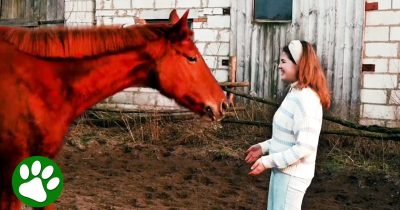
When we think of dogs, we usually think of the domesticated kind we keep as pets. But there are still species of wild dogs in the world, and many are at risk or endangered.
Like one very unique species of dogs, that has long been believed to be extinct in the wild… but have how been spotted after 50 years.
The New Guinea singing dog is an ancient dog native to the New Guinea Highlands. Yes, these dogs can really “sing”: they get their name from their distinct vocalizations, comparable to those of a humpback whale:
Sadly, this unique breed nearly vanished from the earth. The roughly 200 singing dogs were all bred in conservation centers, descendants of a small handful of dogs found in the 1970s.
None had been seen in the wild for 50 years, and their wild population was long believed to be completely extinct.
But that all changed in 2016, when a pack bearing resemblance to the singing dogs was found in New Guinea, raising the possibility that they might not be extinct after all. A second expedition in 2018 aimed to take a closer examination of these dogs.
And now, a study released August 31 revealed that the wild dogs had a 70% genetic overlap with the captive population, confirming the species is still alive in nature.
They look different, but this is due to a greater genetic diversity in the wild, compared to the captive dogs, who have been inbred due to fewer numbers.
Extinction of a species is heartbreaking, so it’s always great news when a species is found to be still alive in the wild.
“New guinea singing dogs are rare, they’re exotic they have this beautiful harmonic vocalization that you don’t find anywhere else in nature so losing that as a species is not a good thing,” Elaine Ostrander, investigator at the National Institutes of Health, told CNN. “We don’t want to see this (animal) disappear.”
Scientists now hope they can get this species of dogs back on its feet by helping to breed the captive population with the wild pack.
In doing so, we can better understand this ancient breed of dogs, and gain further insight to dogs in general.
“By getting to know these ancient, proto-dogs more, we will learn new facts about modern dog breeds and the history of dog domestication,” Ostrander said. “After all, so much of what we learn about dogs reflects back on humans.”
We’re so glad these singing dogs are still around and will be able to share their music with the world! Share this great news!






